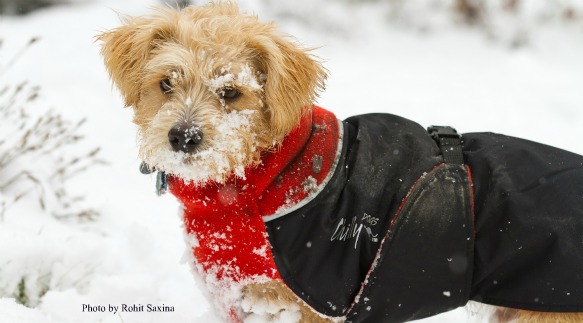
Are you considering using baby powder on your dog and wondering if it’s safe? While baby powder might seem like an easy solution to absorb moisture, reduce odors, or keep your dog feeling fresh, it’s not always the safest choice.
Baby powder is designed for human skin, which differs significantly from a dog’s. Many baby powders contain talc, a mineral that can be dangerous if inhaled by your dog, leading to respiratory issues or irritation.
Even cornstarch-based powders, which are generally considered safer, may pose risks for dogs with sensitive skin or allergies.
Using baby powder improperly could result in skin dryness, irritation, or even ingestion if your dog licks their coat. Dogs are naturally curious and prone to sniffing or licking anything applied to their bodies, so caution is crucial.
For these reasons, experts often recommend pet-specific grooming products, such as dry shampoos, sprays, or grooming wipes, as safer alternatives.
Is Baby Powder Safe for Dogs?
Baby powder, often used by humans to absorb moisture and reduce irritation, is not specifically formulated for dogs and should be used cautiously, if at all.
While baby powder can sometimes help reduce odors or moisture in a dog’s coat, it is essential to consider its ingredients and potential risks before use.
Key Considerations:
Ingredients: Many baby powders contain talc or cornstarch. Talc-based powders can be harmful if inhaled by dogs, potentially leading to respiratory issues.
Cornstarch-based powders are generally safer but may still pose risks if ingested or your dog has allergies.
Sensitivity: Dogs have more sensitive skin than humans, and applying baby powder could cause irritation or dryness in some cases. It’s always best to test on a small area first and monitor your dog for any signs of discomfort or reaction.
Inhalation Risk: Dogs often sniff objects before interacting with them. If baby powder becomes airborne, it could irritate their nasal passages or lungs, especially for breeds prone to respiratory issues, like Bulldogs or Pugs.
Safe Alternatives: If you want to manage your dog’s odor or moisture, consider pet-specific grooming products designed for their skin and coat. Dry shampoos, grooming wipes, or sprays for dogs are safer and more effective options.
How Do I Use It?
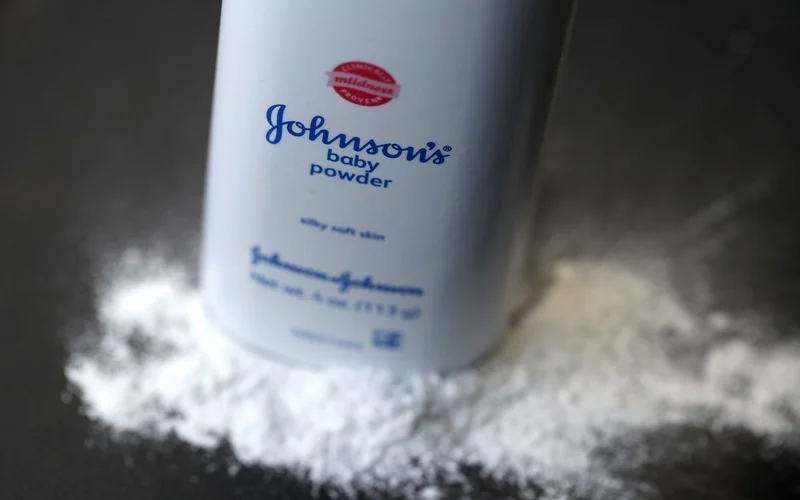
When learning how to use a product, the key is to understand its purpose, follow instructions carefully, and apply it in a way that ensures safety and effectiveness.
Proper usage not only maximizes results but also prevents potential mishaps or unintended consequences. Here’s a detailed breakdown to help you use any product confidently:
Understand Its Purpose: Determine what the product is designed for and whether it’s suitable for your specific needs. Misusing a product outside its intended purpose can lead to poor results or even risks.
Read the Label or Manual: Every product comes with specific instructions for use. Take time to read and understand the directions,
including recommended amounts, methods of application, and any safety warnings. Look for storage guidelines, as improper storage can affect performance.
Prepare for Application: Gather necessary tools, clean the area or surface where you’ll be using the product, and ensure the environment is appropriate (e.g., good ventilation for sprays or liquids).
Test a Small Area: Especially with products applied to surfaces, fabrics, or skin, conduct a patch test in an inconspicuous area. This helps identify any adverse reactions before full application.
Apply as Directed: Use the product exactly as instructed, paying attention to details like application thickness, timing, or sequence of steps. Avoid overuse, as more isn’t always better and may cause unwanted side effects.
Monitor Results: Observe how the product performs. If you don’t achieve the desired results, refer to the troubleshooting tips in the instructions or consult the manufacturer for advice.
Pros of Using Baby Powder on Dogs:
Effective Odor Control: One of the primary benefits of using baby powder on dogs is its ability to absorb and neutralize odors.
If your dog has been outside playing or has accumulated odors between baths, baby powder can help freshen their coat, leaving them smelling cleaner. This can be especially useful during travel or in between regular grooming sessions.
Moisture Absorption: Baby powder helps absorb excess moisture from your dog’s coat, especially in areas prone to dampness like under the ears, between the paws, or around the belly.
Quick and Convenient Application: Applying baby powder is quick and easy. You don’t need water, and there is no need to give your dog a full bath.
This can be a lifesaver for busy pet owners who need a fast way to freshen up their dog’s coat or deal with minor hygiene issues between grooming sessions.
It can also be handy for long-haired breeds that tend to develop tangles or mats when they get moist.
Affordable: Baby powder is relatively inexpensive and widely available compared to specialized pet grooming products.
For pet owners looking for a budget-friendly way to manage their dog’s hygiene, baby powder offers a cost-effective option without sacrificing convenience.
Non-Greasy and Light Texture: Unlike some grooming sprays or oils, baby powder is dry and light, which means it won’t leave your dog’s coat feeling greasy or heavy.
This can be an advantage for dogs with longer coats or those prone to oiliness, as baby powder won’t weigh down their fur or cause it to look dull.
Temporary Relief for Mild Skin Issues: For dogs experiencing mild skin irritation or discomfort due to excess moisture or mild friction (such as between folds of skin or underarms), baby powder can offer temporary relief.
It can reduce chafing, help soothe minor irritation, and keep your dog’s skin feeling more comfortable, though it’s not a substitute for addressing more serious skin conditions or allergies.
Cons of Using Baby Powder on Dogs:
Respiratory Risks: One of the most significant risks of using baby powder on dogs, especially talc-based powders, is the potential for respiratory issues.
When the powder is applied, it can become airborne, and if inhaled, it could cause irritation to your dog’s lungs or nasal passages.
This is particularly concerning for breeds with existing respiratory problems, such as Bulldogs or Pugs, which are more susceptible to breathing issues.
Skin Irritation or Dryness: While baby powder may seem gentle, it can cause skin irritation or dryness, particularly for dogs with sensitive skin.
If left on the coat for too long, the powder may strip away natural oils, leading to itching, flakiness, or discomfort.
Ingestion Risks: Dogs often lick their coats, and if baby powder is applied, there’s a risk that they may ingest it.
Ingesting baby powder can lead to digestive problems or upset stomachs. Talc-based powders are particularly concerning because they may contain harmful substances that can cause toxicity if ingested.
Not Ideal for All Dogs: Baby powder is not suitable for all dogs. Dogs with skin conditions such as rashes, hot spots, or eczema may experience worsening symptoms if baby powder is applied.
It is also not recommended for puppies or dogs with compromised immune systems, as their skin may be more sensitive to external irritants.
Temporary Solution, Not a Cure: Baby powder can temporarily mask odors or reduce moisture, but it doesn’t address the underlying cause of the issue.
For example, if your dog has an ongoing skin condition, such as fungal infections or seborrhea, using baby powder may only provide a short-term fix without treating the root cause.
It can also clog pores, potentially leading to further skin problems if used too frequently.
Messy Application: Baby powder can be messy to apply, especially if you have a dog with a thick or long coat. It may leave a white residue on furniture, floors, or your dog’s bedding, which can be difficult to clean up.
Additionally, if your dog shakes or moves around too quickly, the powder may spread throughout the environment, creating a mess.
Overuse Can Lead to Build-Up: If baby powder is used too frequently, it can build up on your dog’s coat or skin, leading to residue accumulation. This build-up may cause additional irritation, clog hair follicles, or contribute to an unhealthy coat.
Can I Put Baby Powder on My Dog?
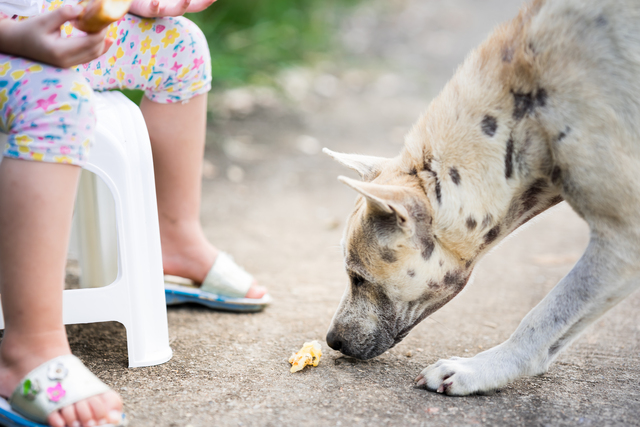
It’s generally not recommended to put baby powder on your dog. While baby powder, especially those made from talc or cornstarch, is commonly used on humans for keeping skin dry,
it can cause harm to pets. Dogs, particularly those with sensitive skin or respiratory issues, may experience irritation if baby powder comes into contact with their skin or is inhaled.
Allergic Reactions
Dogs, like humans, can have allergies or sensitivities to certain substances. Even if baby powder doesn’t cause immediate irritation, your dog may develop an allergic reaction over time.
Symptoms can include itching, redness, swelling, or excessive licking. If you notice any signs of irritation after using baby powder, wash it off immediately with lukewarm water and consult your veterinarian.
Alternative Products for Dogs
If you’re looking for something to absorb moisture, control odor, or soothe your dog’s skin, consider pet-specific products that are made with your dog’s health in mind. Here are a few safe alternatives:
Pet Dry Shampoos: These are designed to freshen up your dog’s coat and skin without irritating it. Look for a dry shampoo formulated for pets, preferably with natural ingredients like oatmeal or aloe vera.
Pet Wipes: Specially formulated dog wipes can help clean your dog’s paws, and coat, They’re safe and gentle for regular use.
Dog Powders: Some brands offer powders specifically designed for dogs. These are usually made for pets and can help with odor control or skin issues.
Baking Soda: If you need to freshen up your dog’s bedding or coat, you can sprinkle a little baking soda and rub it into the fur, followed by a good brushing. Baking soda is a natural deodorizer and is generally safe for dogs.
Bathing and Grooming
Depending on your dog’s breed and activity level, you may need to bathe them every few weeks or months.
Overbathing, however, can strip their skin of natural oils, leading to dryness or irritation. It’s important to find a balance based on your dog’s needs.
When in Doubt, Consult Your Vet
Before trying any new product on your dog, especially if it’s intended for human use, it’s always best to consult your veterinarian.
They can recommend the safest and most effective options for your pet’s specific skin type, coat condition, and any health concerns.
In conclusion, while baby powder might seem harmless, it’s not the best choice for your dog’s health or comfort. Stick to pet-friendly products and always monitor your dog for any signs of irritation or discomfort.
Your veterinarian can provide the best advice on how to keep your furry friend clean, fresh, and safe!
Does Baby Powder Kill Fleas?

While baby powder may seem like a quick fix for fleas, it is not a reliable or effective method for killing or controlling fleas on your dog.
Baby powder, particularly those containing talc or cornstarch, may absorb moisture and make it difficult for fleas to cling to your dog’s fur temporarily, but it does not address the root cause of a flea infestation.
Here’s why baby powder is not a solution for fleas:
No Flea-Killing Properties: Baby powder does not contain ingredients that actively kill fleas. Fleas are resilient and require targeted treatments, such as flea shampoos, sprays, or spot-on treatments, which are specifically designed to eliminate them.
Ineffectiveness Against Flea Life Cycle: Flea infestations are complex, involving multiple stages—eggs, larvae, pupae, and adults. Baby powder is ineffective against flea eggs and larvae, which are typically hidden in your dog’s bedding, carpet,
and other areas of your home. A comprehensive flea treatment plan involves targeting all stages of the flea life cycle.
Potential Skin Issues: Using baby powder on your dog’s skin, especially over long periods, can lead to dryness, irritation, or even respiratory issues if your dog inhales it. These concerns can worsen if your dog has sensitive skin or is prone to allergies.
What Works for Fleas?
For more effective flea treatment, consider using veterinary-approved flea treatments that are designed to kill fleas and prevent future infestations. These include:
- Flea Shampoos: Specially formulated to kill fleas on contact.
- Flea Collars: Provide long-lasting protection.
- Spot-on Treatments: Apply directly to your dog’s skin for monthly protection.
- Oral Flea Medications: Help kill fleas from the inside out by disrupting their life cycle.
Risk of Skin and Respiratory Issues
Is Baby Powder Safe for Dogs, especially talc-based varieties can lead to several potential health risks. Talc, when inhaled, can cause respiratory issues, particularly for dogs with breathing problems or small breeds.
Additionally, baby powder can dry out your dog’s skin or lead to irritation, especially for those with sensitive skin or allergies. If your dog licks the powder, they may also ingest harmful ingredients, leading to digestive issues.
Doesn’t Address Flea Control at Home
Fleas don’t just live on your dog. They are also found in your dog’s environment, including their bedding, furniture, and carpets.
Baby powder will not prevent fleas from laying eggs in these areas or reduce the flea population in your home. Effective flea control requires treating both your pet and its environment simultaneously to prevent re-infestation.
What Should You Use for Flea Control?
If you’re dealing with a flea infestation, it’s essential to use products specifically designed to treat fleas. These products are formulated to kill fleas and prevent future infestations in both your pet and home.
Here are some more effective alternatives:
Flea Shampoos: Special shampoos kill fleas on contact and can provide immediate relief to your dog. They also help in removing fleas from your dog’s coat, but may not fully address the underlying issue if your dog is living in a flea-infested environment.
Spot-on Treatments: These treatments, which are applied directly to your dog’s skin, offer long-term protection. They typically work by killing fleas when they come into contact with your pet’s skin, and they can prevent reinfestations for up to a month.
Flea Collars: These collars are designed to release flea-repelling chemicals and can provide continuous protection against fleas. They are effective for preventing fleas from infesting your dog in the long term.
Environmental Treatments: Flea infestations are not limited to your dog. Treat your home with flea sprays, powders, or foggers to eliminate fleas in your environment.
Wash your dog’s bedding regularly in hot water, vacuum often, and treat carpets or furniture as necessary to remove fleas and their eggs.
Is Powder Good for Dogs?
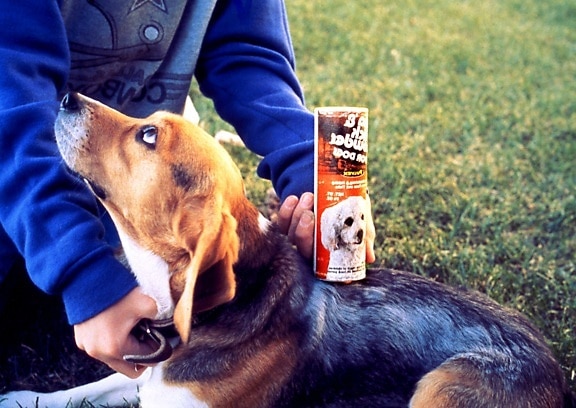
Powder products for dogs can be safe in some situations, but it depends on the type of powder and the specific needs of your dog. While there are powders specifically designed for pets,
using human powders or inappropriate products can cause harm. Here’s a breakdown of when powders might be useful for dogs and when they should be avoided:
Safe Powders for Dogs:
Pet-Specific Powders: These are made with ingredients that are safe for dogs and can help with issues like odor control, skin irritation, or managing moisture. Some examples include:
Talc-Free Dry Dog Shampoos: These are safe powders designed to clean and freshen your dog’s coat They are typically made with safe, non-toxic ingredients like oatmeal or aloe vera.
Medicated Powders: For dogs suffering from conditions like fungal infections, yeast infections, or hot spots, there are medicated powders
that can help treat these issues. They often contain ingredients like miconazole or chlorhexidine, which help control infections.
Baking Soda: Some dog owners use baking soda to freshen up their dog’s coat or bedding. It’s a gentle, natural deodorizer and is generally considered safe when used appropriately.
Cornstarch Powder: Cornstarch-based powders However, they should be used sparingly and in the right context.
When to Avoid Powder:
Talc-Based Powders: Talc (often found in baby powders) should never be used on dogs. When inhaled, talc can cause respiratory issues,
and it may also irritate your dog’s skin or eyes. Talc-based powders can also be toxic if ingested, so it’s best to avoid them entirely.
Fragrance-Based Powders: Powders with strong fragrances can If your dog is prone to allergies or skin sensitivities, these powders can cause itching, redness, or inflammation.
Human Powders: Most powders designed for humans, such as baby powder, body powder, or foot powder, are not suitable for dogs. They can contain harmful chemicals, fragrances, or talc, which can cause adverse reactions.
Alternatives to Powder:
Regular Grooming: Regular brushing and bathing with a dog-friendly shampoo is a better way to keep your dog’s coat clean and healthy. Avoid over-bathing, though, as it can dry out your dog’s skin.
Pet-Specific Sprays and Wipes: If you’re looking to freshen up your dog between baths, there are sprays and wipes designed specifically for dogs. These products are formulated with safe, gentle ingredients that clean and deodorize without irritating.
Proper Skin Care: If your dog has dry or irritated skin, it’s better to consult with a veterinarian. They can recommend specific treatments or topical creams that will be safe and effective.
In Conclusion
While baby powder may offer a temporary, superficial solution to issues like odor or moisture on your dog’s coat, it is not an effective method for dealing with fleas.
Baby powder lacks the necessary properties to kill fleas or address the underlying causes of a flea infestation. It can also lead to health risks, including respiratory issues and skin irritation, especially when used over time or in large amounts.
For proper flea control, it’s important to use veterinary-approved products such as flea shampoos, spot-on treatments, oral medications, and flea collars, which are specifically designed to target fleas and prevent reinfestations.
Additionally, addressing the flea problem in your dog’s environment is crucial for long-term success.
Always consult with your veterinarian to determine the best course of action for your dog’s flea treatment and overall health.
Baby powder should not be relied upon as a primary solution for flea control, and alternative, proven methods are available for safe and effective treatment.
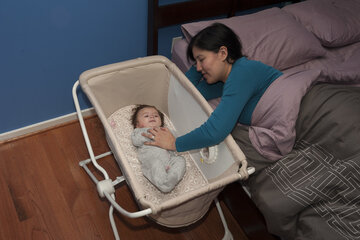

Leave a Comment